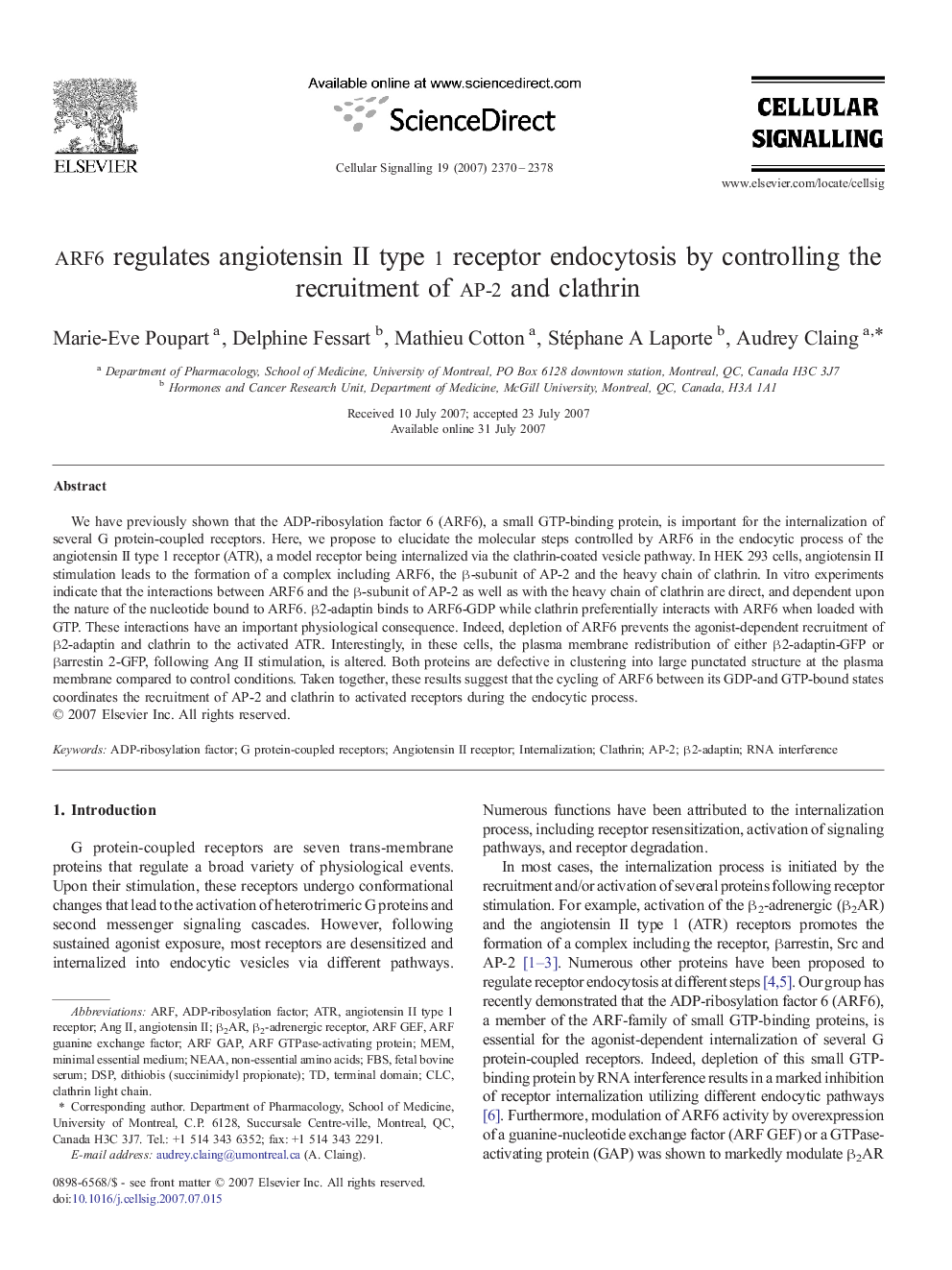| Article ID | Journal | Published Year | Pages | File Type |
|---|---|---|---|---|
| 1964303 | Cellular Signalling | 2007 | 9 Pages |
We have previously shown that the ADP-ribosylation factor 6 (ARF6), a small GTP-binding protein, is important for the internalization of several G protein-coupled receptors. Here, we propose to elucidate the molecular steps controlled by ARF6 in the endocytic process of the angiotensin II type 1 receptor (ATR), a model receptor being internalized via the clathrin-coated vesicle pathway. In HEK 293 cells, angiotensin II stimulation leads to the formation of a complex including ARF6, the β-subunit of AP-2 and the heavy chain of clathrin. In vitro experiments indicate that the interactions between ARF6 and the β-subunit of AP-2 as well as with the heavy chain of clathrin are direct, and dependent upon the nature of the nucleotide bound to ARF6. β2-adaptin binds to ARF6-GDP while clathrin preferentially interacts with ARF6 when loaded with GTP. These interactions have an important physiological consequence. Indeed, depletion of ARF6 prevents the agonist-dependent recruitment of β2-adaptin and clathrin to the activated ATR. Interestingly, in these cells, the plasma membrane redistribution of either β2-adaptin-GFP or βarrestin 2-GFP, following Ang II stimulation, is altered. Both proteins are defective in clustering into large punctated structure at the plasma membrane compared to control conditions. Taken together, these results suggest that the cycling of ARF6 between its GDP-and GTP-bound states coordinates the recruitment of AP-2 and clathrin to activated receptors during the endocytic process.
